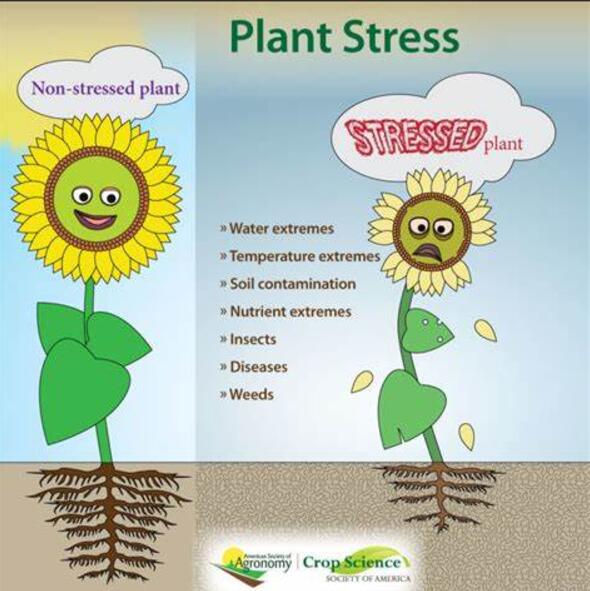Comparative analysis of the NF-Y transcription factor family identifies VaNF-YA6 as a positive regulator of salt and drought tolerance in grapevine
IF 6.8
Q1 PLANT SCIENCES
引用次数: 0
Abstract
Nuclear factor Y transcription factors (NF-Y TFs) play crucial roles in plant responses to abiotic stress. However, there is a lack of research on the comparative analysis of evolutionary relationships, real-time quantitative fluorescence PCR (RT-qPCR), and functions of NF-Y TFs to screen key NF-Y TFs that are resistant to salt and drought stresses between Vitis vinifera (V. vinifera) and Vitis amurensis (V. amurensis). In this study, 27 and 26 NF-Y TFs were identified in V. vinifera and V. amurensis, respectively, and were divided into three subgroups. Subcellular localization prediction revealed that NF-Ys TFs were mainly located in the nucleus. Interestingly, the NF-YA protein sequence of ‘NTKKLDWEFWGCCDDCEKWFGGCC’ was lost in the V. vinifera compared to V. amurensis, whereas the sequence ‘SSVYSQPWWGHSIVCVA’ was gained, thus, these sequences might be closely related to the functions performed. RT-qPCR analysis of ‘Pinot Noir’ (cultivated variety) and ‘Zuoyouhong’ (wild variety) plantlets demonstrated that the expression levels of VaNF-YA6, VaNF-YB5, VvNF-YA3, VvNF-YA5, and VvNF-YC2 were significantly upregulated under 400 mmol·L-1 NaCl and 10% PEG treatments for 24 h Subcellular localization showed that the VaNF-YA6-GFP fusion protein was functioned primarily in the nucleus. Overexpression of VaNF-YA6 in grapevine leaves and Arabidopsis thaliana (Arabidopsis) could significantly enhance tolerance to salt and drought stresses by improving VvSOS2, VvSOS3, VvABF3, VvCPK6 expression levels, enzyme activities, and other protective substances. In summary, our study provides a theoretical basis for the further use of VaNF-YA6 to improve salt and drought resistance in grapevines.
对 NF-Y 转录因子家族的比较分析发现 VaNF-YA6 是葡萄耐盐和耐旱的积极调节因子
核因子 Y 转录因子(NF-Y TFs)在植物对非生物胁迫的响应中起着至关重要的作用。然而,目前还缺乏对 NF-Y TFs 的进化关系、实时荧光定量 PCR(RT-qPCR)和功能进行比较分析,以筛选出葡萄属(Vitis vinifera)和金龟子属(Vitis amurensis)中抗盐胁迫和抗旱胁迫的关键 NF-Y TFs 的研究。本研究在葡萄和金葡萄中分别鉴定了 27 个和 26 个 NF-Y TFs,并将其分为三个亚组。亚细胞定位预测显示,NF-Ys TFs主要位于细胞核中。有趣的是,与 V. amurensis 相比,在 V. vinifera 中丢失了 NF-YA 蛋白序列 "NTKKLDWEFWGCCDDCEKWFGGCC",而获得了序列 "SSVYSQPWWGHSIVCVA",因此这些序列可能与发挥的功能密切相关。对'黑比诺'(栽培品种)和'左友红'(野生品种)小植株的 RT-qPCR 分析表明,在 400 mmol-L-1 NaCl 和 10% PEG 处理 24 h 后,VaNF-YA6、VaNF-YB5、VvNF-YA3、VvNF-YA5 和 VvNF-YC2 的表达水平显著上调。 细胞定位表明,VaNF-YA6-GFP 融合蛋白主要在细胞核中发挥作用。VaNF-YA6在葡萄叶片和拟南芥中的过表达可提高VvSOS2、VvSOS3、VvABF3、VvCPK6的表达水平、酶活性和其他保护物质,从而显著增强对盐胁迫和干旱胁迫的耐受性。总之,我们的研究为进一步利用 VaNF-YA6 提高葡萄树的抗盐和抗旱能力提供了理论依据。
本文章由计算机程序翻译,如有差异,请以英文原文为准。
求助全文
约1分钟内获得全文
求助全文
来源期刊

Plant Stress
PLANT SCIENCES-
CiteScore
5.20
自引率
8.00%
发文量
76
审稿时长
63 days
期刊介绍:
The journal Plant Stress deals with plant (or other photoautotrophs, such as algae, cyanobacteria and lichens) responses to abiotic and biotic stress factors that can result in limited growth and productivity. Such responses can be analyzed and described at a physiological, biochemical and molecular level. Experimental approaches/technologies aiming to improve growth and productivity with a potential for downstream validation under stress conditions will also be considered. Both fundamental and applied research manuscripts are welcome, provided that clear mechanistic hypotheses are made and descriptive approaches are avoided. In addition, high-quality review articles will also be considered, provided they follow a critical approach and stimulate thought for future research avenues.
Plant Stress welcomes high-quality manuscripts related (but not limited) to interactions between plants and:
Lack of water (drought) and excess (flooding),
Salinity stress,
Elevated temperature and/or low temperature (chilling and freezing),
Hypoxia and/or anoxia,
Mineral nutrient excess and/or deficiency,
Heavy metals and/or metalloids,
Plant priming (chemical, biological, physiological, nanomaterial, biostimulant) approaches for improved stress protection,
Viral, phytoplasma, bacterial and fungal plant-pathogen interactions.
The journal welcomes basic and applied research articles, as well as review articles and short communications. All submitted manuscripts will be subject to a thorough peer-reviewing process.
 求助内容:
求助内容: 应助结果提醒方式:
应助结果提醒方式:


